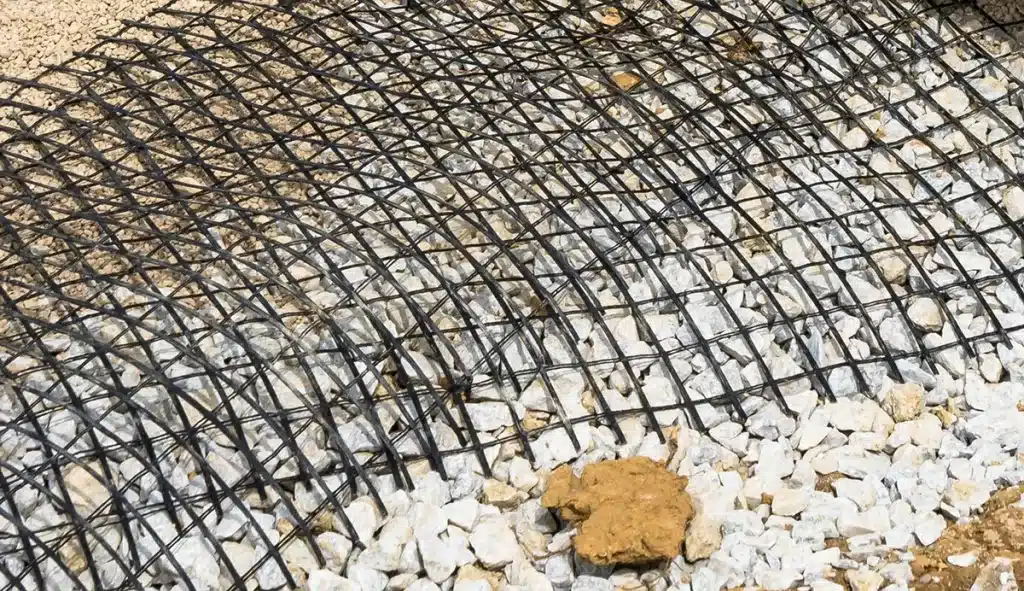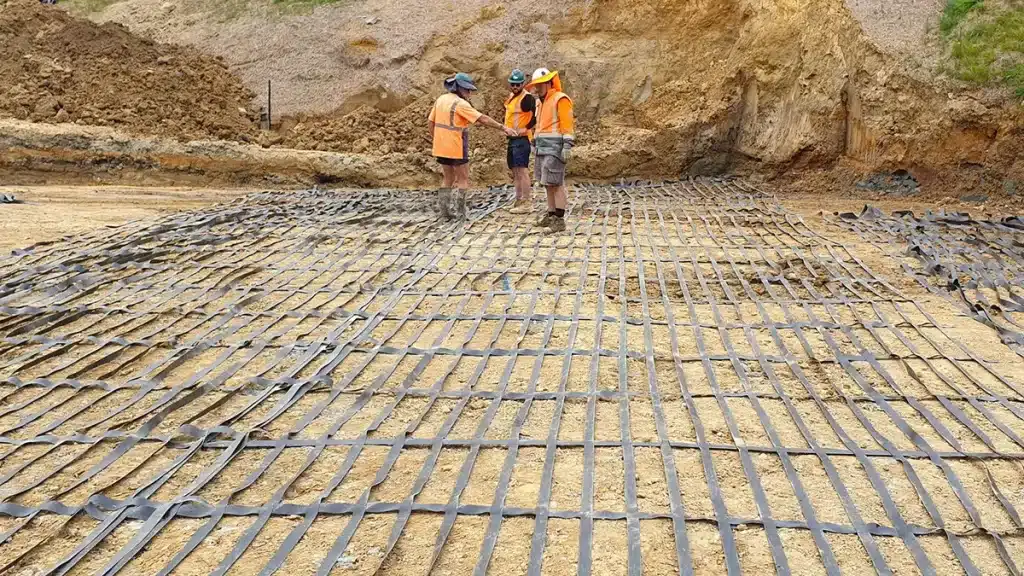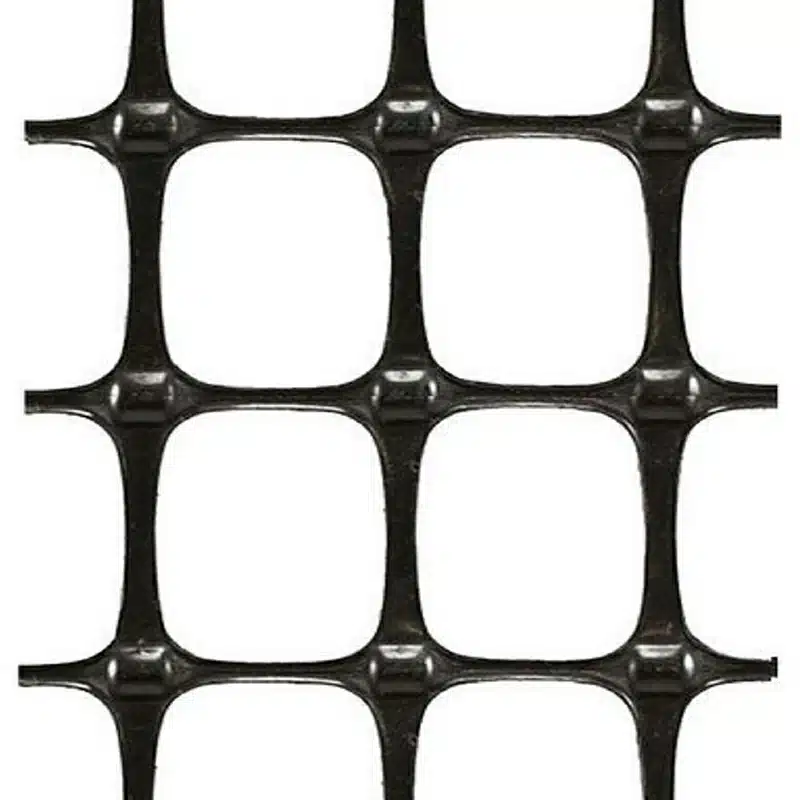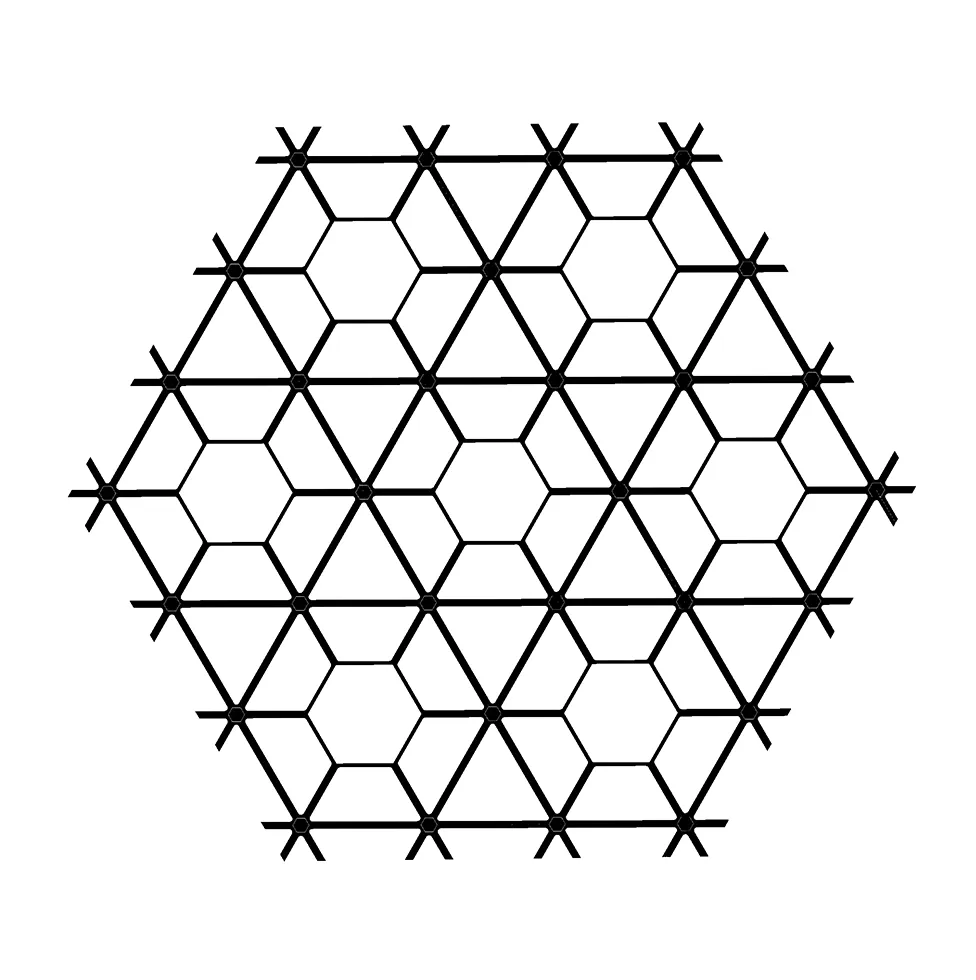+86-159 9860 6917
info@geofantex.com
geofantex@gmail.com
+86-400-8266163-44899
Geogrid reinforcement is a critical aspect of civil engineering and construction. In this article, we’ll delve into geogrid reinforcement, its uses, and its significance. We’ll also address some key questions to provide a comprehensive understanding of this vital construction technique.

What is Geogrid Mesh?
Geogrid, sometimes called geogrid mesh, is a man-made material created from polymers such as polypropylene or polyester. It has a grid-like structure with open spaces and comes in various shapes and sizes to match different engineering requirements. Its primary purpose is to enhance soil stability, reinforce structures, and improve load distribution.
What is Geogrid Reinforcement?
Geogrid reinforcement is the process of using geogrid, a geosynthetic material made of polymers, to strengthen the soil behind retaining walls and other construction materials. This method enhances the mechanical properties of the soil, increasing load-bearing capacity, reducing settlement, and boosting structure durability. It is frequently applied in road construction, retaining walls, and slopes to prevent soil erosion and maintain structural integrity.

What is the Use of Geogrid Reinforcement?
Geogrid reinforcement plays a crucial role in civil engineering, mainly in reinforcing soils and similar materials:
- Load Distribution: Geogrids evenly spread the load, minimizing soil settlement and ensuring structure stability.
- Soil Reinforcement: Geogrids boost the load-bearing capacity of weaker soils, enabling them to support heavier loads without issues.
- Slope Stabilization: Geogrids prevent soil erosion on steep slopes and embankments, preserving the terrain’s structural integrity.
- Retaining Walls: Geogrid reinforcement is widely used in retaining walls to counter lateral earth pressure and prevent wall failure.
- Pavement Enhancement: Geogrids can be integrated into pavement systems, extending their lifespan and reducing cracks and deformations.
How are geogrids different from traditional soil reinforcement techniques?
Traditional soil reinforcement techniques, such as using gravel or soil compaction, rely on the inherent properties of the soil to provide stability. Geogrid reinforcement, on the other hand, employs a synthetic grid structure specifically designed to distribute loads, control soil movement, and enhance the soil’s mechanical properties. The key difference lies in the engineered nature of geogrids, which offer more precise control and predictable results compared to traditional methods.
In conclusion, geogrid reinforcement is an invaluable technique in civil engineering and construction, offering enhanced strength, stability, and sustainability to various structures. By understanding the concept of geogrids and their applications, engineers, and builders can optimize their projects for long-term success.



Get Free Sample
We’ll respond as soon as possible(within 12 hours)





















